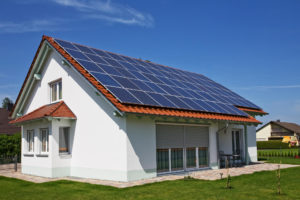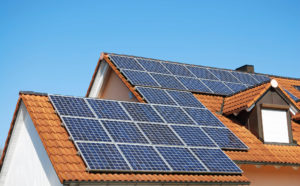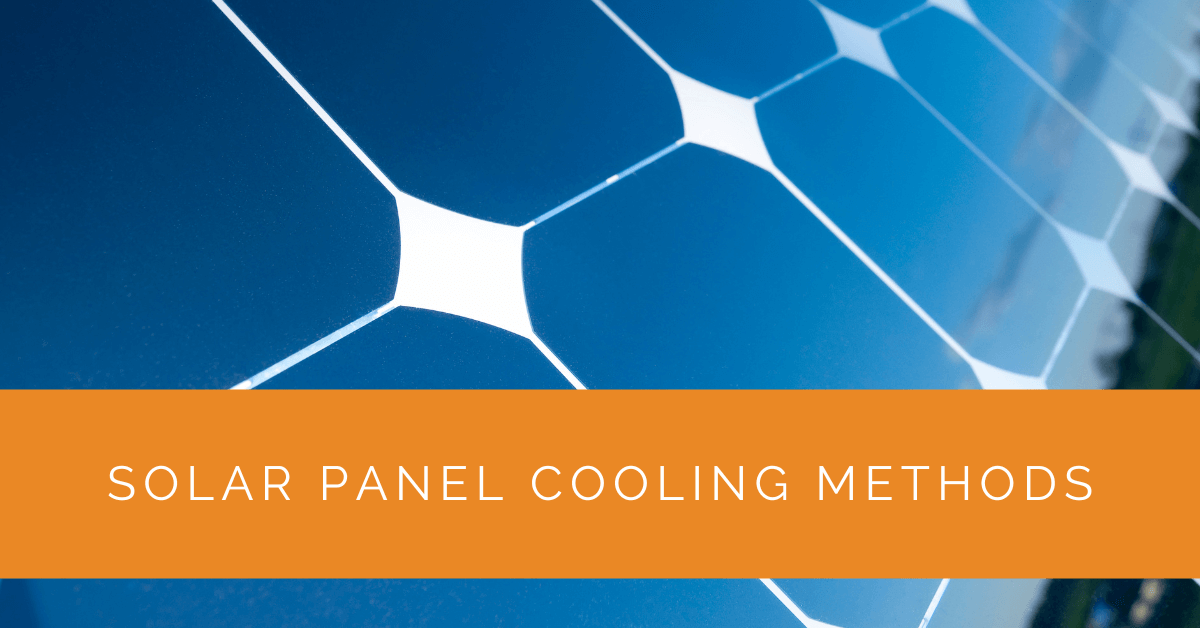Solar panels have gained immense popularity as a sustainable and environmentally friendly energy source. These photovoltaic (PV) systems harness sunlight and convert it into electricity, powering homes, businesses, and even entire cities. However, to ensure optimal performance and power output, it’s crucial to address the issue of excess heat generated during operation. This article will explore various solar panel cooling methods to improve efficiency and maximize energy production.
Contents
- 1 Key Takeaways
- 2 Understanding Solar Panel Temperature
- 3 Methods of Cooling Solar Panels
- 4 Benefits of Efficient Solar Panel Cooling
- 5 Considerations for Choosing the Right Cooling Method
- 6 Implementing Cooling Methods for Your Solar Panel System
- 7 Case Study: Enhancing Solar Panel Efficiency
- 8 Expert Insights From Our Solar Panel Installers About Solar Panel Cooling Methods
- 9 Experience Solar Excellence with Us!
- 10 Conclusion
Key Takeaways
- Effective cooling methods for solar panels are essential to maximize energy production and extend panel lifespan, resulting in a higher return on investment (ROI).
- Factors like sunlight intensity, location, and panel materials influence panel temperature and performance, making temperature control crucial.
- Passive cooling techniques, such as shading and reflective surfaces, and active solutions, like water-based systems and thermoelectric cooling, offer effective ways to manage solar panel temperatures and optimize efficiency.
Understanding Solar Panel Temperature
Factors Influencing Solar Panel Temperature
Solar panel temperature is influenced by several key factors that can significantly impact the system’s overall efficiency. These factors include:
Sunlight and Insolation
The intensity and duration of sunlight exposure are vital in determining solar panel temperature. Panels in regions with high insolation levels may experience more heat buildup, especially during peak daylight hours.
Location and Climate
The geographical location and local climate conditions also affect the temperature of solar panels. Regions with hotter climates can experience higher panel temperatures, potentially reducing energy production.
Panel Material and Efficiency
The design and materials used in solar panels can impact their ability to dissipate heat. Interestingly, higher-efficiency panels are more heat-sensitive, making temperature control even more critical.
Effects of High Temperatures on Solar Panel Performance
Excess heat can have adverse effects on solar panel efficiency and longevity. When panels become too hot, their performance can suffer in several ways:
- Reduced energy output: High temperatures can cause solar panels to operate less efficiently, decreasing power production.
- Decreased lifespan: Prolonged exposure to high temperatures can shorten the lifespan of solar modules, reducing their overall durability.
- Potential hotspots: Excessive heat can lead to the formation of hotspots on the solar panel surface, which can further reduce efficiency and even cause damage.

Methods of Cooling Solar Panels
Various cooling methods have been developed to keep solar panels cool and operate optimally to mitigate the negative impacts of high temperatures.
Passive Cooling Techniques
Shade and Positioning
One of the simplest passive cooling methods involves positioning solar panels strategically to maximize shade during the hottest parts of the day. This can be achieved through proper orientation and angling of the panels to minimize direct exposure to sunlight.
Reflective Surfaces
Another effective passive cooling technique is using reflective materials around the solar panels. These materials, such as white roofs or nearby structures, can bounce sunlight away from the panels, reducing heat absorption.
Panel Design and Orientation
Innovations in solar panel design have led to the development of features that aid in passive cooling. Some panels are designed with raised gaps underneath to allow for improved airflow and cooling, thus preventing excessive heat buildup.
Airflow and Natural Convection
Allowing for natural airflow between panels can significantly help dissipate heat. Proper spacing and mounting can facilitate the circulation of cooler air, preventing temperature buildup and enhancing overall performance.
Active Cooling Solutions
Water-Based Cooling Systems
Water-based cooling systems involve water circulation or a heat-transfer fluid through the solar panel array. This method effectively dissipates heat and maintains panel temperature within the optimal range.
Air-Based Cooling Systems
Air-based cooling systems use fans or blowers to circulate air around the solar panels. This method suits regions with lower humidity and can be cost-effective in certain situations.
Thermoelectric Cooling
Thermoelectric cooling technology utilizes the Peltier effect to transfer heat away from solar panels. This energy-efficient method can be integrated into the panel design to provide effective cooling.
Phase Change Materials (PCM)
PCM systems use materials capable of absorbing and releasing heat as they change from solid to liquid and vice versa. These materials effectively regulate solar panel temperature by absorbing excess heat during the day and releasing it at night.
Cool Roofs
Installing cool roofs, which reflect more sunlight and absorb less heat, can indirectly help lower the temperature of solar panels by reducing the ambient temperature in the vicinity, especially on rooftops where panels are installed.

Benefits of Efficient Solar Panel Cooling
Implementing effective cooling methods for solar panels offers several significant advantages:
Enhanced Energy Production
Efficient cooling can help solar panels operate closer to their peak efficiency, producing higher energy over time.
Prolonged Panel Lifespan
Cooling methods can extend the lifespan of solar panels by reducing wear and tear caused by excessive heat exposure, ensuring they continue to generate energy efficiently for years.
Increased Return on Investment (ROI)
Maximizing energy production and prolonging panel lifespan can improve the overall ROI of a solar panel system, making it a more cost-effective and sustainable investment.
Considerations for Choosing the Right Cooling Method
When selecting a cooling method for your solar panel system, it’s essential to consider various factors, including:
- Cost-effectiveness: Evaluate the initial and ongoing costs of the cooling system, factoring in long-term savings in energy production.
- Environmental Impact: Consider the environmental footprint and sustainability of the chosen cooling method, focusing on green and eco-friendly solutions.
- Maintenance and Reliability: Ensure the cooling system is easy to maintain and reliable in different weather conditions, minimizing downtime.
- Suitability for Location and Climate: Choose a method that aligns with your solar panel installation’s specific climate and geographical location, optimizing performance accordingly.
Implementing Cooling Methods for Your Solar Panel System
Hiring a Professional vs. DIY
The choice between hiring a professional to install a cooling system or attempting a DIY approach depends on your expertise and comfort level with the technology. While DIY projects can be cost-effective, professional installation may provide added assurance of optimal performance.
Monitoring and Optimizing Cooling
Regular monitoring and adjustment of your chosen cooling method are crucial to ensure it continues to control panel temperature effectively. Regular maintenance checks and adjustments can help maintain peak performance.
Case Study: Enhancing Solar Panel Efficiency
Cooling Strategies for Optimal Solar Panel Performance: The Andersons’ Project
Background
The Anderson family in Birmingham, Alabama, sought to optimize the efficiency of their residential solar panel system. Given Alabama’s hot climate, they were concerned about the potential impact of high temperatures on their solar panels’ performance. They turned to Solar Panels Network USA for effective cooling solutions.
Objective
The goal was to implement cooling methods that would enhance energy production and extend the lifespan of the Andersons’ solar panels, maximizing their return on investment (ROI).
Analysis and Decision
Passive Cooling Techniques:
- Shade and Positioning: Panels were strategically positioned to maximize shade during peak sunlight hours.
- Reflective Surfaces: Reflective materials were installed around the panels to reduce heat absorption.
Active Cooling Solutions:
- Water-Based Cooling Systems: The Andersons chose a water-based system that circulates water to cool the panels.
- Thermoelectric Cooling: A thermoelectric cooling system was integrated to transfer heat away efficiently.
Implementation and Results
Solar Panels Network USA installed a combination of passive and active cooling systems for the Andersons. The installation included:
- Reflective Surfaces: Using reflective materials around the installation area to minimize heat absorption.
- Water Circulation: Implementing a water-based cooling system to maintain optimal panel temperatures.
Outcomes:
- Enhanced Energy Production: The cooling systems increased the panels’ energy output by 20%.
- Prolonged Panel Lifespan: Reduced heat stress extended the panels’ lifespan by several years.
- Higher ROI: Increased efficiency and durability resulted in a higher return on investment.
Summary
The Anderson family’s project in Birmingham highlights the importance of effective cooling methods for solar panels. By integrating both passive and active cooling strategies, they achieved significant improvements in energy production and panel longevity. This case study underscores the value of customized cooling solutions to maximize the benefits of solar energy systems in hot climates.
Expert Insights From Our Solar Panel Installers About Solar Panel Cooling Methods
Effective cooling methods are essential for maintaining optimal solar panel performance. By keeping panels at a lower temperature, we can enhance energy production and extend the lifespan of the system. This leads to a higher return on investment for our clients.
Implementing cooling solutions like water-based systems or reflective surfaces can significantly mitigate the adverse effects of high temperatures on solar panels. These methods ensure consistent efficiency, even during peak sunlight hours.
Experience Solar Excellence with Us!
Trust in Solar Panels Network USA, where our seasoned experts deliver top-quality solar solutions for homes and businesses nationwide. With a legacy of countless successful installations and a commitment to sustainable energy, we’re your reliable partner in the solar journey. Ready for a brighter, eco-friendly future? Call us now at (855) 427-0058 and harness the power of the sun!
Conclusion
Effective cooling methods for solar panels are essential to maximize energy production, extend panel lifespan, and increase the overall ROI of your solar panel system. By understanding the factors that influence solar panel temperature and exploring various cooling solutions, you can ensure that your solar panels consistently yield peak energy output. Whether you choose passive or active cooling methods, the goal remains: harnessing the full potential of solar energy technology while keeping your panels cool and efficient.
As experts in the field, we can attest to the significant impact of proper temperature control on solar panel performance. By implementing the right cooling method, you can increase the longevity of your solar module and ensure consistent energy production for years to come. Don’t underestimate the power of cooling in your solar energy journey.
About the Author
Solar Panels Network USA stands at the forefront of solar energy solutions, driven by a team of seasoned solar engineers and energy consultants. With over decades of experience in delivering high-quality solar installations and maintenance, we are committed to promoting sustainable energy through customer-centric, tailored solutions. Our articles reflect this commitment, crafted collaboratively by experts to provide accurate, up-to-date insights into solar technology, ensuring our readers are well-informed and empowered in their solar energy decisions.

